vacuum pump type Introduction
Vacuum is a kind of practical tool widely used in industrial manufacturing process, including packaging, bottling, drying, degassing, picking and placing, etc. Industrial vacuum pumps are used to create, improve and maintain vacuum in these processes. There are many types of industrial vacuum technologies available, which are discussed in this paper. To understand which vacuum is most suitable for you and your application, it is important to understand the functions, advantages and working principles of each technology.
vacuum pump basic working principle
Regardless of the type of technology, the basic working principle of the vacuum pump remains unchanged.
The vacuum pump removes air molecules (and other gases) from the vacuum chamber (or, in the case of a higher vacuum pump connected in series, the outlet side). As the pressure in the chamber decreases, it becomes more and more difficult to remove other molecules. Therefore, the industrial vacuum system (Figure 1) must be able to operate on a part of a very large pressure range, which usually varies from 1 to 10-6 Torr / 1.3 to 13.3 mbar. In research and scientific applications, this range is extended to 10-9 torr or less. For this reason, different types of pumps are used in the standard vacuum system. Each pump covers a certain proportion of the pressure range, and sometimes runs in series.
Pressure range of vacuum system
The vacuum system can be placed in the following pressure range groups:
Roughness / low vacuum: 1000 to 1 mbar / 760 to 0.75 Torr
Fine / medium vacuum: 1 to 10 – 3 mbar / 0.75 to 7.5 – 3 Torr
High vacuum: 10-3 to 10-7 mbar / 7.5-3 to 7.5-7 Torr
Ultra high vacuum: 10-7 to 10-11 mbar / 7.5-7 to 7.5-11 Torr
Very high vacuum: < 10-11 mbar / < 7.5-11 Torr
Then, according to these different types of vacuum range pumps can be divided into the first stage (backup) pump, booster pump and the second stage (high vacuum) pump: high, ultra-high and ultra-high vacuum pressure range.
There are two basic categories of vacuum pumps: gas delivery pumps and interception or capture pumps (Figure 1).
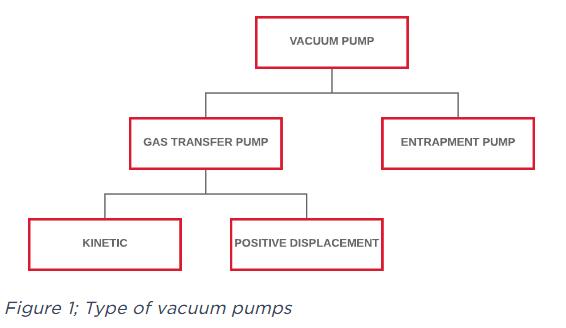
Gas delivery pump
The delivery pump delivers gas molecules through momentum exchange (dynamics) or positive displacement. When entering the pump, the number of gas molecules discharged from the pump is the same, and the gas body is slightly higher than atmospheric pressure when discharged. The compression ratio is the ratio of the exhaust pressure (outlet) to the minimum pressure (inlet) obtained.
Dynamic delivery pump
Momentum transfer pump uses high-speed blades or introduced steam to guide the gas to the outlet, and follows the momentum transfer principle. These types of pumps can achieve a high compression ratio at low pressure, but usually do not have a sealed volume.
Positive displacement vacuum pump
A pump that mechanically catches a certain amount of gas and moves it through the pump is called a positive displacement vacuum pump. It is usually designed in several stages on a single drive shaft to compress the isolated volume into a smaller volume at a higher pressure, and finally discharge the compressed gas to atmospheric pressure or the next pump. In order to provide higher vacuum and flow rate, two delivery pumps are often used in series.
As mentioned before, the positive displacement vacuum pump is used to produce low vacuum. This type of vacuum pump can enlarge the cavity and allow gas to flow out of the sealed environment or cavity. The cavity is then sealed and vented to the atmosphere. The principle behind the volume vacuum pump is to produce vacuum by expanding the volume of the container.
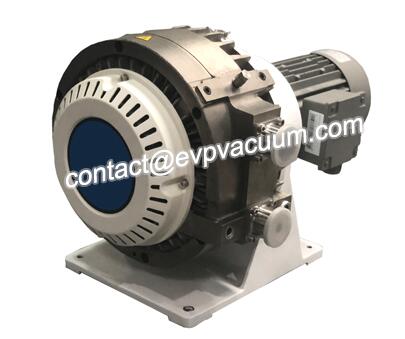
Wet or dry vacuum pumps – General
Vacuum pump technology is considered wet (lubricated) or dry (no oil or dry operation), depending on whether the gas is exposed to oil or water during compression.
The wet pump lubricates and / or seals itself with oil or water; this fluid can contaminate the gas being pumped (purged). Relatively speaking, there is no fluid in the pumping gas of the dry vacuum pump, which depends on the precise clearance between the rotating and static parts of the pump, dry polymer (PTFE) seal or diaphragm to separate the pumping mechanism from the gas and ensure tight sealing.
However, drying is not completely oil-free because oil or grease is often used in pump gears and bearings. This is kept separate from the vacuum compression side. Dry pumps reduce the risk of contamination and oil mist. They also have the environmental benefit of not having to deal with oils such as lubricating pumps.
centrifugal pump
Centrifugal pumps are hydraulically operated machines, which are characterized by their ability to transfer energy to fluids (especially liquids) through the action of centrifugal force fields. Their main purpose is to deliver fluid by increasing pressure. Centrifugal pump can have different structures, but its working principle and hydrodynamic characteristics are always the same.
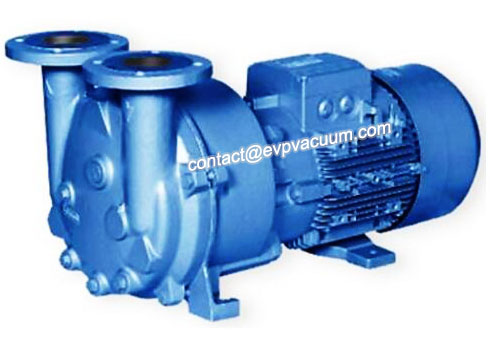
Liquid ring vacuum pump
The liquid ring vacuum pump is similar to the rotary vane pump, the difference is that the vane is an integral part of the rotor, and stirs the liquid rotary ring to form a compression chamber seal. They are inherently low friction design and the rotor is the only moving part. Sliding friction is limited to the shaft seal. Liquid ring vacuum pump is usually driven by induction motor. The liquid ring system can be single-stage or multi-stage.
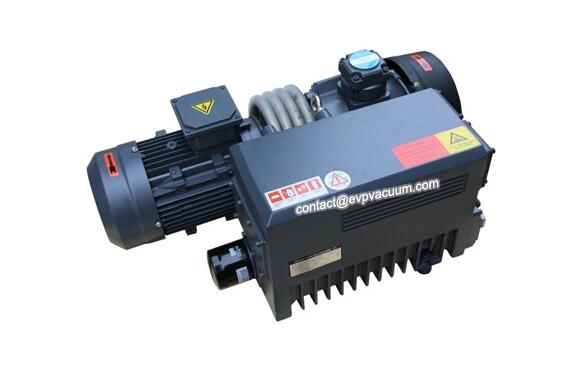
Rotary vacuum pump
Rotary claw vacuum pump can produce high efficiency and non-contact vacuum economically. This is possible due to the internal compression principle in the design of the rotating claw. The claw vacuum pump is based on a static compression system. In contrast to rotating lobes, compression occurs internally through volume contraction.
The claw pump consists of two rotors. They rotate in the opposite direction in the compressor housing without contact and a very tight gap is observed. They are synchronized by precision gears. When the claw moves on the suction interface, the intake air of the axial suction channel is drawn into the compression chamber. The gas is precompressed in the compression chamber and then discharged.
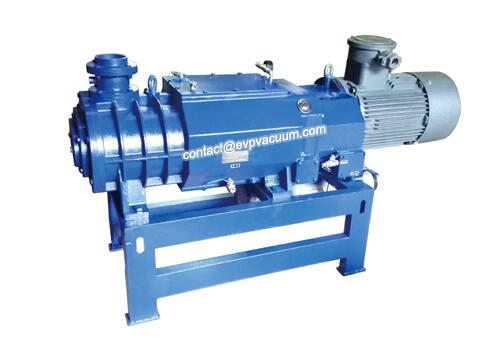
Dry screw vacuum pump
The screw vacuum pump consists of two parallel helical rotors, one with right-hand thread and the other with left-hand thread. Both screws are screwed into the compressor housing with no gap and tight gap.
They are synchronized by precision gears. The compression chamber is formed by compression chamber and special shape screws. Due to the reverse rotation of the two screws, the chamber connected to the suction port is enlarged and the gas is delivered to the compression chamber. The chamber then moves axially from the suction side to the pressure side.
In the variable pitch model, the gas is compressed at each pitch change and cooled before the next pitch change, which improves the efficiency. On the pressure side, the chamber moves against the axial shell wall, and the volume decreases until the front surface of the screw opens the pressure channel, and the pre compressed gas is discharged through the pressure interface. Cooling can be achieved by using a water-cooled external chamber. For some sizes of pumps, additional cooling gas can be introduced into the vacuum pump.
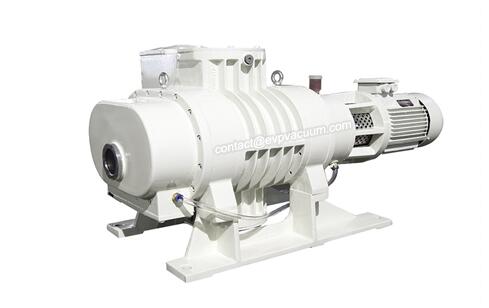
Roots vacuum pump
For Roots vacuum pump, two 8-shaped rotors rotate in the same reverse direction, and the gas is taken from the inlet to the outlet.
The speed range of Roots vacuum pump is (30-3) × 104l / s, the first stage limit pressure is about 1-10pa and has a large stable speed within the pressure range of 1-102pa, so it is also called fast vacuum pump; roots vacuum pump is often used as the front pump of jet pump and oil diffusion pump to boost pressure, so it is also called mechanical booster pump.
Rotor blade clearance of Roots vacuum pump: small is 0.1-0.2mm, large is 0.2-0.4mm, so it is not sensitive to dust, fiber, water, etc. in the gas, but it is not suitable to pump corrosive or flammable and explosive gas. There are no friction parts in the working cavity of roots pump, no need for oil lubrication and no oil pollution.
When the pressure ratio is high, the exhaust temperature may be very high, so it needs water for cooling, and the cooling water pipe is set at the exhaust port of the pump.
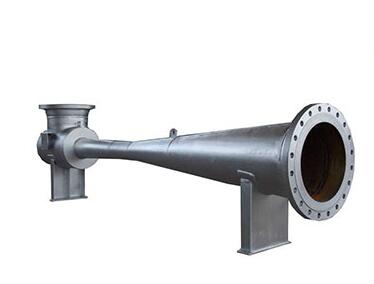
Jet vacuum pump
The working principle of jet type vacuum pump is to use the pressure fluid as the power to produce high-speed movement after passing through the nozzle, and generate negative pressure around the nozzle, so as to draw the gas in the system and inject it to the outlet.
Jet pump is characterized by fast start, wide working pressure range, large air extraction, dust-containing, flammable and explosive gas suction, no moving parts except the pump, reliable operation, but the water consumption is large. As the power of pump injection, there are: water vapor, oil vapor, air and water, among which water vapor is the most, followed by air, water in a few cases, oil as a separate jet pump is rarely used.
(The article comes from the Internet. If reprinting is not allowed, please contact our company to delete it.)
